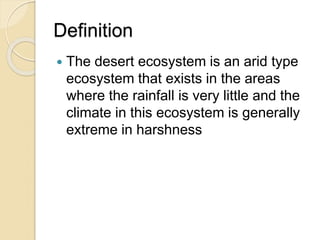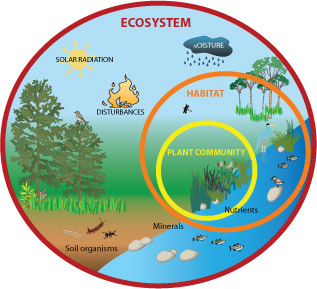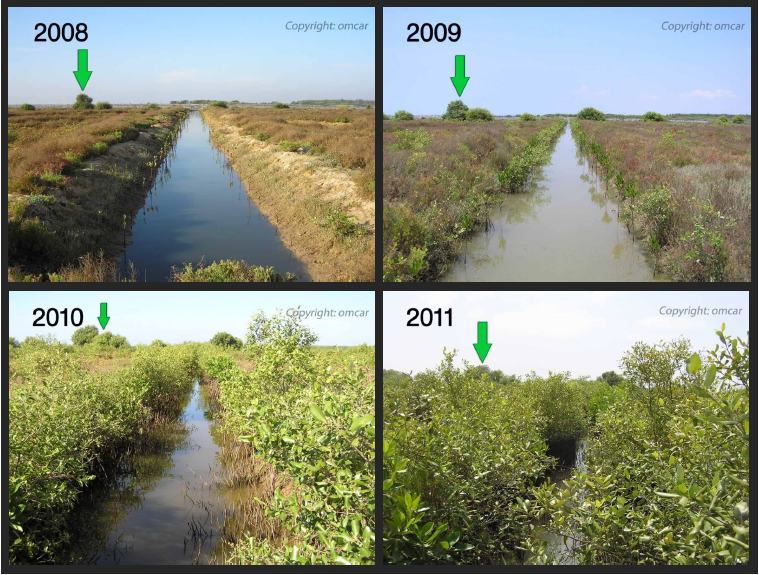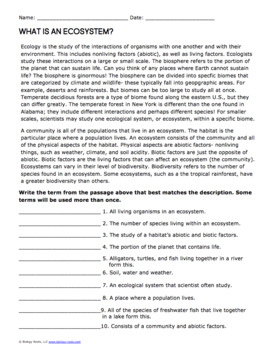Topic define ecosystem in ecology: Explore the fascinating world of ecosystems in ecology, where interdependent relationships form the foundation of our planet"s biodiversity and health.
Table of Content
- What are the components of ecosystems in ecology?
- Definition of Ecosystem
- Components of an Ecosystem
- Types of Ecosystems
- Functions of Ecosystems
- Energy Flow in Ecosystems
- Nutrient Cycles
- YOUTUBE: Exploring Ecosystems
- Importance of Biodiversity
- Human Impact on Ecosystems
- Conservation and Restoration Ecology
- Case Studies of Ecosystem Management
What are the components of ecosystems in ecology?
Components of ecosystems in ecology include:
- Biotic factors:
- Plants
- Animals
- Microorganisms
- Fungi
- Protists
- Abiotic factors:
- Soil
- Water
- Air
- Sunlight
- Temperature
- Minerals
- Nutrients
READ MORE:
Definition of Ecosystem
An ecosystem in ecology refers to a complex network of living organisms and the physical environment they interact with. It encompasses the biological community (biotic factors) and non-living (abiotic factors) components such as climate, soil, water, and sunlight. These elements work together to form a unique and dynamic system where energy flows and nutrients cycle, supporting a diverse array of life forms.
Ecosystems can vary greatly in size and complexity, from small and simple like a pond to vast and complex like a rainforest or an ocean. Each ecosystem plays a crucial role in maintaining the balance of nature, providing essential services that benefit not only the organisms within it but also humans, through processes like pollination, water purification, and carbon sequestration.
The health and stability of ecosystems are fundamental to biodiversity and the overall well-being of our planet. Understanding ecosystems and their functions helps us appreciate the delicate balance of life and the importance of conservation efforts to protect these vital systems.

Components of an Ecosystem
Ecosystems are composed of biotic (living) and abiotic (non-living) components that interact in complex ways. Understanding these components is essential to grasp how ecosystems function and support life.
- Biotic Components: These include all living organisms within the ecosystem, divided into producers (autotrophs), consumers (heterotrophs), and decomposers. Producers, like plants and algae, convert solar energy into food through photosynthesis. Consumers can be herbivores, carnivores, or omnivores, feeding on plants or other animals. Decomposers, such as fungi and bacteria, break down dead organic matter, returning nutrients to the soil.
- Abiotic Components: These are the non-living parts of an ecosystem that influence the living organisms. They include elements like sunlight, water, air, soil, temperature, and minerals. These factors determine the types of organisms that can survive and thrive in an ecosystem.
The interaction between biotic and abiotic components creates a dynamic system where energy flows and nutrients cycle. This interdependence ensures the sustainability of ecosystems and the diversity of life they support.
Types of Ecosystems
Ecosystems are diverse and can be classified into two main categories based on their environment: terrestrial and aquatic. Each category is further divided into various types, each with unique characteristics and life forms.
- Terrestrial Ecosystems: These are land-based ecosystems. Key types include:
- Forests: Comprising tropical, temperate, and boreal forests, they are characterized by dense tree coverage and rich biodiversity.
- Grasslands: Including savannas and temperate grasslands, these areas are dominated by grasses and have a wide variety of herbivores.
- Deserts: Known for extreme dry conditions, deserts have specialized plants and animals adapted to low water availability.
- Tundra: Characterized by cold temperatures and short growing seasons, the tundra is found in polar regions and at high elevations.
- Aquatic Ecosystems: These are water-based ecosystems. They include:
- Freshwater: Such as lakes, rivers, ponds, and wetlands, these ecosystems are crucial for the water supply and habitat for many species.
- Marine: Covering oceans, coral reefs, and estuaries, marine ecosystems are diverse in species and are essential for global climate regulation.
Each ecosystem type supports unique communities of organisms adapted to their specific environment. Understanding these types helps in the conservation and management of biodiversity.
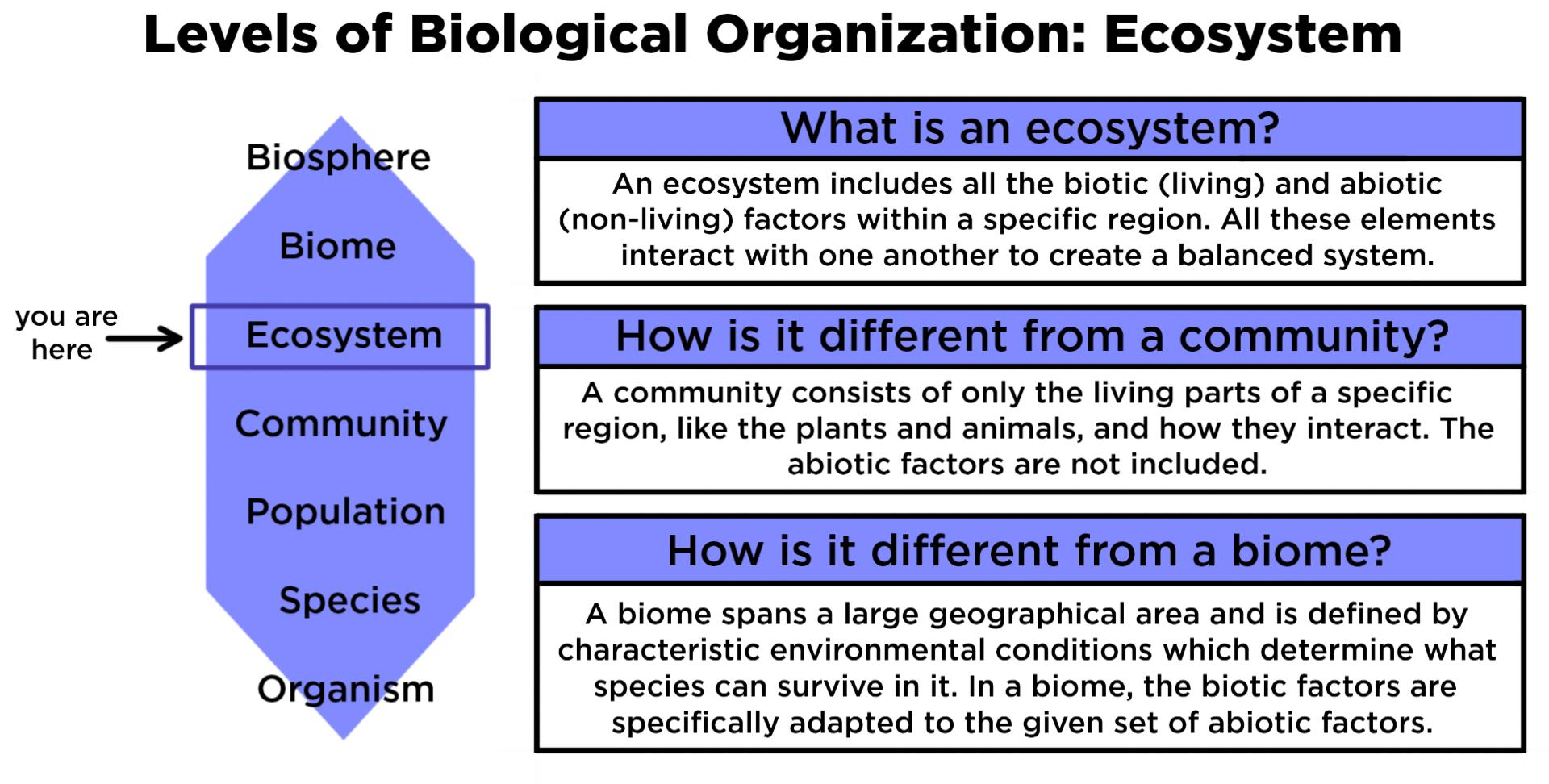
Functions of Ecosystems
Ecosystems perform essential functions that support life on Earth, maintaining the balance and health of the environment. These functions can be categorized into provisioning, regulating, supporting, and cultural services.
- Provisioning Services: Ecosystems provide resources that humans need to survive, including food, water, timber, fiber, and genetic resources.
- Regulating Services: They regulate essential ecological processes and life-support systems, including air quality maintenance, climate regulation through carbon storage and sequestration, waste decomposition, and detoxification, as well as water purification and pest control.
- Supporting Services: These are necessary for the production of all other ecosystem services, such as soil formation, nutrient cycling, and the pollination of plants.
- Cultural Services: Ecosystems provide cultural or aesthetic benefits, including recreational, spiritual, and educational experiences. Natural landscapes and wildlife hold cultural significance for many societies and contribute to the human sense of identity and well-being.
Understanding the multifaceted roles of ecosystems is crucial for sustainable management and conservation efforts, ensuring that these natural systems continue to support life on Earth for future generations.
Energy Flow in Ecosystems
The flow of energy through an ecosystem is fundamental to the survival and function of all living organisms within it. This process follows the law of conservation of energy, stating that energy is neither created nor destroyed but transformed and transferred through different levels of the ecosystem.
- Sunlight as the Primary Energy Source: For most ecosystems, the sun is the primary source of energy. Plants and other photosynthetic organisms capture solar energy and convert it into chemical energy through photosynthesis.
- Trophic Levels: Organisms in an ecosystem are organized into trophic levels based on their source of energy. The primary producers (autotrophs) occupy the first level, followed by primary consumers (herbivores), secondary consumers (carnivores that eat herbivores), and tertiary consumers (carnivores that eat other carnivores).
- Energy Transfer Efficiency: As energy flows from one trophic level to the next, only about 10% of the energy is transferred to the next level. The rest is lost as heat or used for metabolic processes, leading to a decrease in available energy at higher trophic levels.
- Decomposers and Detritivores: Decomposers (bacteria and fungi) and detritivores (organisms that feed on dead matter) play a crucial role in recycling nutrients and energy back into the ecosystem, completing the energy cycle.
This energy flow creates a complex web of interactions that sustains the ecosystem"s structure and functions, highlighting the importance of each organism in maintaining ecological balance.

Nutrient Cycles
Nutrient cycles, also known as biogeochemical cycles, are critical processes in ecosystems that recycle nutrients, connecting the biological, geological, and chemical aspects of the environment. These cycles ensure the availability of essential nutrients for all living organisms.
- Carbon Cycle: The carbon cycle involves the exchange of carbon among the biosphere, pedosphere, geosphere, hydrosphere, and atmosphere of Earth. It is crucial for regulating Earth"s climate by controlling the levels of carbon dioxide in the atmosphere.
- Nitrogen Cycle: Nitrogen is essential for all living organisms to synthesize proteins and nucleic acids. The nitrogen cycle describes the movement of nitrogen between the atmosphere, soil, and organisms, including processes like nitrogen fixation, nitrification, denitrification, and ammonification.
- Phosphorus Cycle: Phosphorus is a key component of nucleic acids, ATP, and phospholipids. The phosphorus cycle moves phosphorus through the lithosphere, hydrosphere, and biosphere, unlike the carbon and nitrogen cycles, it does not have a gaseous phase.
- Water Cycle: The water cycle, or hydrological cycle, describes the continuous movement of water on, above, and below the surface of the Earth. This cycle includes processes like evaporation, condensation, precipitation, and runoff, which distribute water and its dissolved nutrients.
These nutrient cycles are interconnected and essential for maintaining the health and sustainability of ecosystems. Alterations in these cycles due to human activities can lead to environmental imbalances and ecological consequences.
Exploring Ecosystems
Step into the mesmerizing world of habitats and witness the diverse ecosystems that support a wide range of wildlife. Our video takes you on a journey through lush forests, vast oceans, and sprawling savannas, highlighting the unique features of each habitat.
Exploring Ecosystems
Step into the mesmerizing world of habitats and witness the diverse ecosystems that support a wide range of wildlife. Our video takes you on a journey through lush forests, vast oceans, and sprawling savannas, highlighting the unique features of each habitat.
Importance of Biodiversity
Biodiversity, the variety of life on Earth in all its forms and interactions, is not just a feature of our planet; it"s a fundamental component that ensures ecological stability and resilience. The importance of biodiversity spans various aspects of human well-being and ecological balance.
- Ecosystem Services: Biodiversity supports a wide range of ecosystem services that are essential for human survival, including oxygen production, water purification, pollination of crops, and climate regulation.
- Economic Benefits: Many sectors depend on biodiversity, such as agriculture, pharmaceuticals, and tourism, providing significant economic benefits through resources like food, medicine, and recreation.
- Ecological Balance: Diverse ecosystems are more resilient to disturbances and changes, ensuring stability through natural cycles and processes like pest and disease control.
- Research and Development: Biodiversity is a vital resource for scientific research and innovation, offering a wealth of knowledge that can lead to medical breakthroughs and sustainable technologies.
- Cultural and Aesthetic Value: Biodiversity enriches cultures and contributes to the aesthetic appreciation of nature, enhancing human health and well-being through recreational and spiritual experiences.
The protection of biodiversity is crucial for maintaining the planet"s health and ensuring a sustainable future for all species, including humans. It underscores the interconnectedness of life and the importance of conserving diverse biological systems for the benefit of present and future generations.
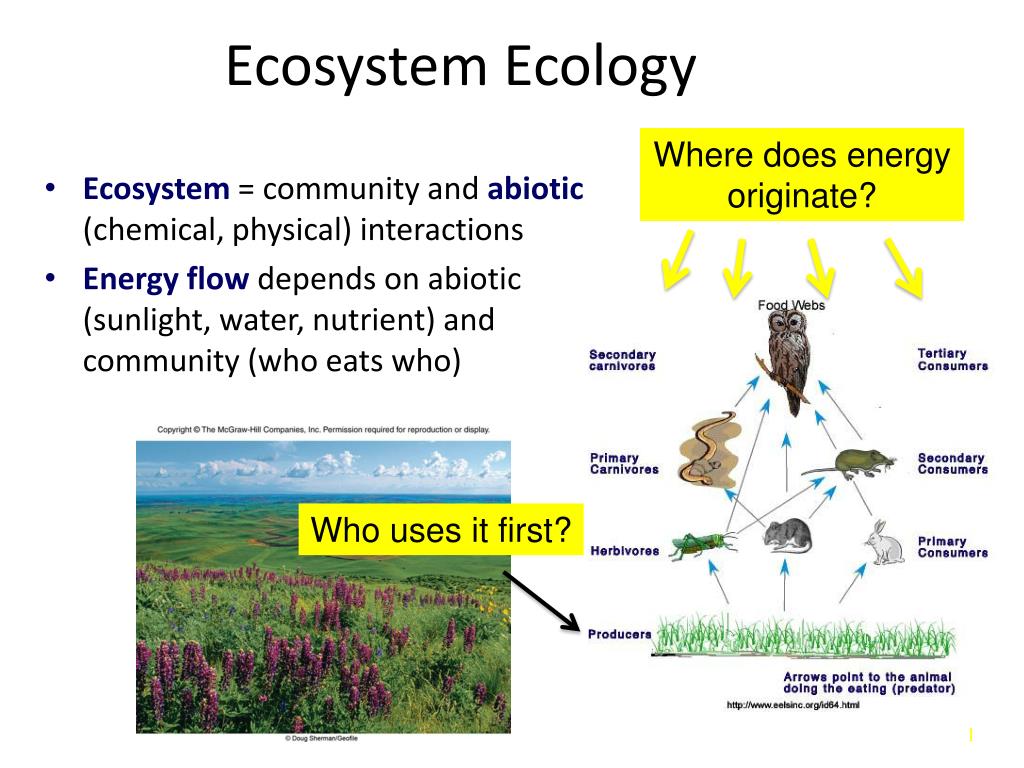
Human Impact on Ecosystems
Human activities have profound impacts on ecosystems, often altering their natural balance and reducing biodiversity. Understanding these impacts is crucial for developing strategies to mitigate negative effects and promote sustainability.
- Land Use Changes: Urbanization, agriculture, and deforestation lead to habitat loss and fragmentation, the primary cause of biodiversity decline. These changes limit the natural habitats available for wildlife, often leading to species extinction.
- Pollution: Air, water, and soil pollution from industrial activities, agriculture, and waste disposal introduce harmful substances into ecosystems, affecting both wildlife and human health.
- Climate Change: Emissions of greenhouse gases from human activities are leading to global warming and climate change, impacting ecosystems through temperature rises, altered precipitation patterns, and increased frequency of extreme weather events.
- Overexploitation: The excessive harvesting of natural resources, such as overfishing, logging, and poaching, depletes populations faster than they can recover, leading to significant declines in biodiversity.
- Invasive Species: Human activity often introduces non-native species to new environments, where they can become invasive, outcompeting or predating native species and disrupting ecosystem dynamics.
Addressing human impact on ecosystems involves promoting sustainable practices, conserving natural habitats, reducing pollution, and taking action on climate change. This collective effort can help ensure the health and resilience of ecosystems for future generations.
Conservation and Restoration Ecology
Conservation and restoration ecology are critical fields focused on protecting natural ecosystems and restoring those that have been damaged or degraded. These efforts aim to preserve biodiversity, ecosystem services, and the overall health of the planet.
- Conservation Strategies: These include creating protected areas, implementing sustainable resource management practices, and conserving endangered species through breeding programs and habitat protection. Conservation efforts also involve policy-making and community engagement to ensure long-term success.
- Restoration Techniques: Restoration ecology employs various techniques to rehabilitate ecosystems. These can range from reforestation and wetland restoration to invasive species control and pollution cleanup. The goal is to restore natural processes and biodiversity levels as closely as possible to their original state.
- Reintroduction of Species: A key component of restoration is the reintroduction of native species to areas where they have been extirpated. This helps to restore ecological balance and enhance biodiversity.
- Climate Change Mitigation: Conservation and restoration activities contribute to climate change mitigation by increasing carbon sequestration, protecting natural carbon sinks, and enhancing ecosystem resilience to climate impacts.
- Community Involvement: Successful conservation and restoration efforts often rely on active involvement from local communities. Educating and engaging communities in conservation practices helps to ensure the sustainability of these efforts.
Through the combined efforts of conservation and restoration ecology, we can work towards a more sustainable and resilient future, ensuring that ecosystems and their services are preserved for future generations.

READ MORE:
Case Studies of Ecosystem Management
Ecosystem management involves integrated approaches to manage and conserve ecosystems and their services effectively. Here are some case studies that highlight successful ecosystem management practices from around the world.
- The Everglades Restoration Project: In Florida, USA, this large-scale effort aims to restore the natural flow of water to this unique wetland ecosystem, combating years of drainage and degradation to protect its rich biodiversity.
- The Great Barrier Reef Marine Park: Australia"s approach to protecting the world"s largest coral reef system involves zoning, management plans, and community engagement to balance conservation with sustainable use.
- Amazon Rainforest Conservation: Initiatives in Brazil and other Amazonian countries focus on reducing deforestation, establishing protected areas, and promoting sustainable land use practices to conserve this vital biodiversity hotspot.
- The Serengeti Conservation Project: This project in Tanzania employs a multifaceted approach to wildlife conservation, addressing poaching, human-wildlife conflict, and habitat preservation to protect one of the most significant and renowned ecosystems on the planet.
- Community-based Forest Management in Nepal: In Nepal, community forestry programs empower local communities to manage forest resources sustainably, leading to improved forest conservation and livelihoods.
These case studies demonstrate the importance of integrated, multi-stakeholder approaches to ecosystem management, showcasing the positive outcomes of carefully planned and executed conservation strategies.
Exploring the intricacies of ecosystems in ecology reveals the beauty and complexity of our natural world, urging us to protect this delicate balance for future generations to cherish and sustain.

